340 and 339 LESSON 09 and 08 08 2011
Madhupindika Sutta The Ball of Honey
Udayi Sutta About Udayin FREE ONLINE eNālandā Research and Practice
UNIVERSITY and BUDDHIST GOOD NEWS letter to VOTE for BSP ELEPHANT to attain
Ultimate Bliss-Through http://sarvajan.ambedkar.org- Free Buddhist Studies for Young Students- Lesson 4: Life Story of the Buddha –In
Search of Truth and Lesson 5: Life Story of the Buddha –The First Discourse
AN 5.159
PTS: A iii 184
Udayi Sutta: About
Udayin
translated from the Pali
by
Thanissaro Bhikkhu
I have heard that on one occasion the Blessed One was staying at
Kosambi, in Ghosita’s Park. Now at that time Ven. Udayin
was sitting surrounded by a large assembly of householders, teaching the
Dhamma. Ven. Ananda saw Ven. Udayin sitting surrounded by a
large assembly of householders, teaching the Dhamma, and on seeing him went to
the Blessed One. On arrival, he bowed down to the Blessed One and sat to one
side. As he was sitting there he said to the Blessed One: “Ven. Udayin,
lord, is sitting surrounded by a large assembly of householders, teaching the
Dhamma.”
“It’s not easy to teach the Dhamma to others, Ananda. The
Dhamma should be taught to others only when five qualities are established
within the person teaching. Which five?
“[1] The Dhamma should be taught with the thought, ‘I will
speak step-by-step.’
“[2] The Dhamma should be taught with the thought, ‘I will
speak explaining the sequence [of cause & effect].’
“[3] The Dhamma should be taught with the thought, ‘I will
speak out of compassion.’
“[4] The Dhamma should be taught with the thought, ‘I will
speak not for the purpose of material reward.’
“[5] The Dhamma should be taught with the thought, ‘I will
speak without hurting myself or others.’[1]
“It’s not easy to teach the Dhamma to others, Ananda. The
Dhamma should be taught to others only when these five qualities are
established within the person teaching.”
Lesson 4: Life Story of the Buddha –
In Search of Truth

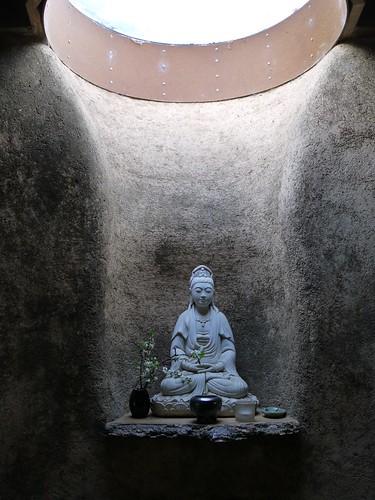
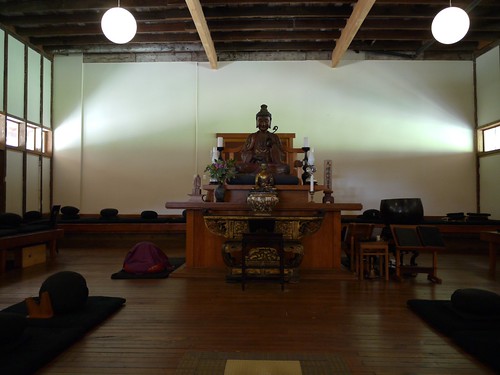
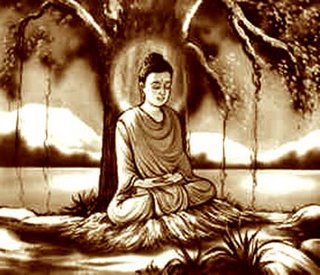




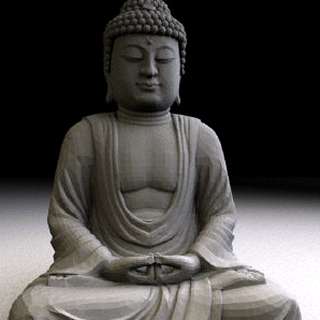




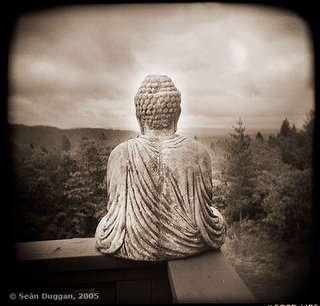




1. Where did Siddhattha go
after he left the palace?
2. Discuss the story of the
wounded lamb and fire ceremony. What did
Siddhattha tell the king
Bimbisara and why?
3. Who were Siddhattha’s
meditation teachers, what did they teach
him, and why did he leave
them?
4. What is asceticism and why
did people practice it?
5. Describe Siddhattha’s life
as an ascetic. What happened to him at
the end?
6. What very important qualities
did Siddhattha show before he
became Buddha?
18
1. What did Siddhattha
discover while sitting under the Bodhi tree,
and how did he discover it?
2. What is the law of Kamma?
3. Why is the Buddha pictured
with a circle around his head?
1.
a) Have you ever saved an
animal from dying? If so, write a short
story or tell others about
it.
b) Do you know of some
people, now living or from the past, who
saved other people from
suffering and death? If so, describe what they
did and why they did it.
2.
a) Do you sometimes overeat,
eat unhealthy food, or skip meals? Do
you sometimes get very tired
from your schoolwork?
b) Do you think it is good to
go to extremes, and overdo things? If not,
why not?
19
3. Do you like natural
science at school? What are your favorite topics
and why?
4. What is meditation? Try a
short meditation on breathing (ask your
teacher, or use the Appendix
of this book for instructions).
?
1. Why did the prehistoric
people begin using fire, and how did they
make it?
2. Use your library or
Internet resources to find out about lives of
several famous scientists
(e.g. Galileo, Newton, Darwin and others).
What did all those scientists
have in common? How do we benefit
from their discoveries?
3. How can we benefit from
the Buddha’s discoveries?
Madhupindika Sutta: The
Ball of Honey
translated from the Pali
by
Thanissaro Bhikkhu
Translator’s
Introduction
This discourse plays a central role in the early Buddhist
analysis of conflict. As might be expected, the blame for conflict lies within,
in the unskillful habits of the mind, rather than without. The culprit in this
case is a habit called papañca. Unfortunately, none of the early texts
give a clear definition of what the word papañca means, so it’s hard to find a
precise English equivalent for the term. However, they do give a clear analysis
of how papañca arises, how it leads to conflict, and how it can be ended. In
the final analysis, these are the questions that matter — more than the precise
definition of terms — so we will deal with them first before proposing a few
possible translation equivalents for the word.
Three passages in the discourses — DN 21, MN 18, and Sn 4.11 — map the causal processes that give
rise to papañca and lead from papañca to conflict. Because the Buddhist
analysis of causality is generally non-linear, with plenty of room for feedback
loops, the maps vary in some of their details. In DN 21, the map reads like this:
the perceptions &
categories of papañca > thinking > desire > dear-&-not-dear >
envy & stinginess > rivalry & hostility
In Sn 4.11, the map is less linear and can be
diagrammed like this:
perception > the categories of papañca
perception > name & form > contact > appealing
& unappealing > desire > dear-&-not-dear >
stinginess/divisiveness/quarrels/disputes
In MN 18, the map is this:
contact > feeling
> perception > thinking > the perceptions & categories of papañca
In this last case, however, the bare outline misses some of the
important implications of the way this process is phrased. In the full passage,
the analysis starts out in an impersonal tone:
Dependent on eye &
forms, eye-consciousness arises [similarly with the rest of the six senses].
The meeting of the three is contact. With contact as a requisite condition,
there is feeling.
Starting with feeling, the notion of an “agent” — in
this case, the feeler — acting on “objects,” is introduced:
What one feels, one
perceives (labels in the mind). What one perceives, one thinks about. What one
thinks about, one “papañcizes.”
Through the process of papañca, the agent then becomes a victim
of his/her own patterns of thinking:
Based on what a person
papañcizes, the perceptions & categories of papañca assail him/her with
regard to past, present, & future forms cognizable via the eye [as with the
remaining senses].
What are these perceptions & categories that assail the
person who papañcizes? Sn 4.14 states that the root of the categories
of papañca is the perception, “I am the thinker.” From this self-reflexive
thought — in which one conceives a “self,” a thing corresponding to
the concept of “I” — a number of categories can be derived:
being/not-being, me/not-me, mine/not-mine, doer/done-to, signifier/signified.
Once one’s self becomes a thing under the rubric of these categories, it’s
impossible not to be assailed by the perceptions & categories derived from
these basic distinctions. When there’s the sense of identification with
something that experiences, then based on the feelings arising from sensory contact,
some feelings will seem appealing — worth getting for the self — and others
will seem unappealing — worth pushing away. From this there grows desire, which
comes into conflict with the desires of others who are also engaging in
papañca. This is how inner objectifications breed external contention.
How can this process be ended? Through a shift in perception,
caused by the way one attends to feelings, using the categories of appropriate
attention [see MN 2]. As the Buddha states in DN 21, rather than viewing a feeling as an
appealing or unappealing thing, one should look at it as part of a causal process:
when a particular feeling is pursued, do skillful or unskillful qualities
increase in the mind? If skillful qualities increase, the feeling may be
pursued. If unskillful qualities increase, it shouldn’t. When comparing
feelings that lead to skillful qualities, notice which are more refined: those
accompanied with thinking (directed thought) and evaluation, or those free of
thinking and evaluation, as in the higher stages of mental absorption, or
jhana. When seeing this, there is a tendency to opt for the more refined
feelings, and this cuts through the act of thinking that, according to MN 18,
provides the basis for papañca.
In following this program, the notion of agent and victim is
avoided, as is self-reflexive thinking in general. There is simply the analysis
of cause-effect processes. One is still making use of dualities —
distinguishing between unskillful and skillful (and affliction/lack of
affliction, the results of unskillful and skillful qualities) — but the
distinction is between processes, not things. Thus one’s analysis avoids the
type of thinking that, according to DN 21, depends on the perceptions and
categories of papañca, and in this way the vicious cycle by which thinking and
papañca keep feeding each other is cut.
Ultimately, by following this program to greater and greater
levels of refinement through the higher levels of mental absorption, one finds
less and less to relish and enjoy in the six senses and the mental processes
based on them. With this sense of disenchantment, the processes of feeling and
thought are stilled, and there is a breakthrough to the cessation of the six
sense spheres. When these spheres cease, is there anything else left? Ven. Sariputta,
in AN 4.174, warns us not to ask, for to ask if
there is, isn’t, both-is-and-isn’t, neither-is-nor-isn’t anything left in that
dimension is to papañcize what is free from papañca. However, this dimension is
not a total annihilation of experience. It’s a type of experience that DN 11 calls consciousness without feature,
luminous all around, where water, earth, fire, & wind have no footing,
where long/short, coarse/fine, fair/foul, name/form are all brought to an end.
This is the fruit of the path of arahantship — a path that makes use of
dualities but leads to a fruit beyond them.
It may come as cold comfort to realize that conflict can be
totally overcome only with the realization of arahantship, but it’s important
to note that by following the path recommended in DN 21 — learning to avoid references to any
notion of “self” and learning to view feelings not as things but as
parts of a causal process affecting the qualities in the mind — the basis for
papañca is gradually undercut, and there are fewer and fewer occasions for
conflict. In following this path, one reaps its increasing benefits all along
the way.
Translating
papañca: As one writer has noted, the word papañca
has had a wide variety of meanings in Indian thought, with only one constant:
in Buddhist philosophical discourse it carries negative connotations, usually
of falsification and distortion. The word itself is derived from a root that
means diffuseness, spreading, proliferating. The Pali Commentaries define
papañca as covering three types of thought: craving, conceit, and views. They
also note that it functions to slow the mind down in its escape from samsara.
Because its categories begin with the objectifying thought, “I am the
thinker,” I have chosen to render the word as “objectification,”
although some of the following alternatives might be acceptable as well:
self-reflexive thinking, reification, proliferation, complication, elaboration,
distortion. The word offers some interesting parallels to the postmodern notion
of logocentric thinking, but it’s important to note that the Buddha’s program
of deconstructing this process differs sharply from that of postmodern thought.
I have heard that on one occasion the Blessed One was living
among the Sakyans near Kapilavatthu in the Banyan Park. Then in the early morning,
having put on his robes and carrying his bowl & outer robe, he went into
Kapilavatthu for alms. Having gone for alms in Kapilavatthu, after the meal,
returning from his alms round, he went to the Great Wood for the day’s abiding.
Plunging into the Great Wood, he sat down at the root of a bilva sapling for
the day’s abiding.
Dandapani
(”Stick-in-hand”) the Sakyan, out roaming & rambling for
exercise, also went to the Great Wood. Plunging into the Great Wood, he went to
where the Blessed One was under the bilva sapling. On arrival, he exchanged
courteous greetings with him. After an exchange of friendly greetings &
courtesies, he stood to one side. As he was standing there, he said to the
Blessed One, “What is the contemplative’s doctrine? What does he proclaim?”
“The sort of doctrine, friend, where one does not keep
quarreling with anyone in the cosmos with its devas, Maras, & Brahmas, with
its contemplatives & priests, its royalty & commonfolk; the sort [of
doctrine] where perceptions no longer obsess the brahman who remains
dissociated from sensuality, free from perplexity, his uncertainty cut away,
devoid of craving for becoming & non-. Such is my doctrine, such is what I
proclaim.”
When this was said, Dandapani the Sakyan — shaking his head,
wagging his tongue, raising his eyebrows so that his forehead was wrinkled in
three furrows — left, leaning on his stick.
Then, when it was evening, the Blessed One rose from his
seclusion and went to the Banyan Park. On arrival, he sat down on a seat made
ready. As he was sitting there, he [told the monks what had happened]. When
this was said, a certain monk said to the Blessed One, “Lord, what sort of
doctrine is it where one does not keep quarreling with anyone in the cosmos
with its deities, Maras, & Brahmas, with its contemplatives & priests,
its royalty & commonfolk; where perceptions no longer obsess the brahman
who remains dissociated from sensuality, free from perplexity, his uncertainty
cut away, devoid of craving for becoming & non-?”
“If, monk, with regard to the cause whereby the perceptions
& categories of objectification assail a person, there is nothing there to
relish, welcome, or remain fastened to, then that is the end of the obsessions
of passion, the obsessions of resistance, the obsessions of views, the
obsessions of uncertainty, the obsessions of conceit, the obsessions of passion
for becoming, & the obsessions of ignorance. That is the end of taking up
rods & bladed weapons, of arguments, quarrels, disputes, accusations, divisive
tale-bearing, & false speech. That is where these evil, unskillful things
cease without remainder.” That is what the Blessed One said. Having said
it, the One Well-gone got up from his seat and went into his dwelling.
Then, not long after the Blessed One had left, this thought
occurred to the monks: “This brief statement the Blessed One made, after
which he went into his dwelling without analyzing the detailed meaning — i.e.,
‘If, with regard to the cause whereby the perceptions & categories of
objectification assail a person, there is nothing to relish… that is where
these evil, unskillful things cease without remainder’: now who might analyze
the unanalyzed detailed meaning of this brief statement?” Then the thought
occurred to them, “Ven. Maha Kaccana is
praised by the Teacher and esteemed by his knowledgeable companions in the holy
life. He is capable of analyzing the unanalyzed detailed meaning of this brief
statement. Suppose we were to go to him and, on arrival, question him about
this matter.”
So the monks went to Ven. Maha Kaccana and, on arrival exchanged
courteous greetings with him. After an exchange of friendly greetings &
courtesies, they sat to one side. As they were sitting there, they [told him
what had happened, and added,] “Analyze the meaning, Ven. Maha
Kaccana!”
[He replied:] “Friends, it’s
as if a man needing heartwood, looking for heartwood, wandering in search
of heartwood — passing over the root & trunk of a standing tree possessing
heartwood — were to imagine that heartwood should be sought among its branches
& leaves. So it is with you, who — having bypassed the Blessed One when you
were face to face with him, the Teacher — imagine that I should be asked about
this matter. For knowing, the Blessed One knows; seeing, he sees. He is the Eye, he is Knowledge, he is Dhamma, he is
Brahma. He is the speaker, the proclaimer, the elucidator of meaning, the giver
of the Deathless, the lord of the Dhamma, the Tathagata. That was the time when
you should have questioned him about this matter. However he answered, that was
how you should have remembered it.”
“Yes, friend Kaccana: knowing, the Blessed One knows;
seeing, he sees. He is the Eye, he is Knowledge, he is Dhamma, he is Brahma. He
is the speaker, the proclaimer, the elucidator of meaning, the giver of the
Deathless, the lord of the Dhamma, the Tathagata. That was the time when we
should have questioned him about this matter. However he answered, that was how
we should have remembered it. But you are praised by the Teacher and esteemed
by your knowledgeable companions in the holy life. You are capable of analyzing
the unanalyzed detailed meaning of this brief statement. Analyze the meaning,
Ven. Maha Kaccana!”
“In that case, my friends, listen & pay close
attention. I will speak.”
“As you say, friend,” the monks responded.
Ven. Maha Kaccana said this: “Concerning the brief
statement the Blessed One made, after which he went into his dwelling without
analyzing the detailed meaning — i.e., ‘If, with regard to the cause whereby
the perceptions & categories of objectification assail a person, there is
nothing there to relish, welcome, or remain fastened to, then that is the end
of the obsessions of passion, the obsessions of resistance, the obsessions of
views, the obsessions of uncertainty, the obsessions of conceit, the obsessions
of passion for becoming, & the obsessions of ignorance. That is the end of
taking up rods & bladed weapons, of arguments, quarrels, disputes,
accusations, divisive tale-bearing, & false speech. That is where these
evil, unskillful things cease without remainder’
“Dependent on eye & forms, eye-consciousness arises.
The meeting of the three is contact. With contact as a requisite condition,
there is feeling. What one feels, one perceives (labels in the mind). What one
perceives, one thinks about. What one thinks about, one objectifies. Based on
what a person objectifies, the perceptions & categories of objectification
assail him/her with regard to past, present, & future forms cognizable via
the eye.
“Dependent on ear & sounds, ear-consciousness arises…
“Dependent on nose & aromas, nose-consciousness
arises…
“Dependent on tongue & flavors, tongue-consciousness
arises…
“Dependent on body & tactile sensations,
body-consciousness arises…
“Dependent on intellect & ideas,
intellect-consciousness arises. The meeting of the three is contact. With
contact as a requisite condition, there is feeling. What one feels, one
perceives (labels in the mind). What one perceives, one thinks about. What one
thinks about, one objectifies. Based on what a person objectifies, the
perceptions & categories of objectification assail him/her with regard to
past, present, & future ideas cognizable via the intellect.
“Now, when there is the eye, when there are forms, when
there is eye-consciousness, it is possible that one will delineate a
delineation of contact.[1]
When there is a delineation of contact, it is possible that one will delineate
a delineation of feeling. When there is a delineation of feeling, it is
possible that one will delineate a delineation of perception. When there is a
delineation of perception, it is possible that one will delineate a delineation
of thinking. When there is a delineation of thinking, it is possible that one
will delineate a delineation of being assailed by the perceptions &
categories of objectification.
“When there is the ear…
“When there is the nose…
“When there is the tongue…
“When there is the body…
“When there is the intellect, when there are ideas, when
there is intellect-consciousness, it is possible that one will delineate a
delineation of contact. When there is a delineation of contact, it is possible
that one will delineate a delineation of feeling. When there is a delineation
of feeling, it is possible that one will delineate a delineation of perception.
When there is a delineation of perception, it is possible that one will
delineate a delineation of thinking. When there is a delineation of thinking, it
is possible that one will delineate a delineation of being assailed by the
perceptions & categories of objectification.
“Now, when there is no eye, when there are no forms, when
there is no eye-consciousness, it is impossible that one will delineate a delineation
of contact. When there is no delineation of contact, it is impossible that one
will delineate a delineation of feeling. When there is no delineation of
feeling, it is impossible that one will delineate a delineation of perception.
When there is no delineation of perception, it is impossible that one will
delineate a delineation of thinking. When there is no delineation of thinking,
it is impossible that one will delineate a delineation of being assailed by the
perceptions & categories of objectification.
“When there is no ear…
“When there is no nose…
“When there is no tongue…
“When there is no body…
“When there is no intellect, when there are no ideas, when
there is no intellect-consciousness, it is impossible that one will delineate a
delineation of contact. When there is no delineation of contact, it is
impossible that one will delineate a delineation of feeling. When there is no
delineation of feeling, it is impossible that one will delineate a delineation
of perception. When there is no delineation of perception, it is impossible
that one will delineate a delineation of thinking. When there is no delineation
of thinking, it is impossible that one will delineate a delineation of being
assailed by the perceptions & categories of objectification.
“So, concerning the brief statement the Blessed One made,
after which he entered his dwelling without analyzing the detailed meaning —
i.e., ‘If, with regard to the cause whereby the perceptions & categories of
objectification assail a person, there is nothing there to relish, welcome, or
remain fastened to, then that is the end of the obsessions of passion, the
obsessions of resistance, the obsessions of views, the obsessions of
uncertainty, the obsessions of conceit, the obsessions of passion for becoming,
& the obsessions of ignorance. That is the end of taking up rods &
bladed weapons, of arguments, quarrels, disputes, accusations, divisive
tale-bearing, & false speech. That is where these evil, unskillful things
cease without remainder’ — this is how I understand the detailed meaning. Now,
if you wish, having gone to the Blessed One, question him about this matter.
However he answers is how you should remember it.”
Then the monks, delighting & approving of Ven. Maha
Kaccana’s words, rose from their seats and went to the Blessed One. On arrival,
having bowed down to him, they sat to one side. As they were sitting there,
they [told him what had happened after he had gone into his dwelling, and ended
by saying,] “Then Ven. Maha Kaccana analyzed the meaning using these
words, statements, & phrases.”
“Maha Kaccana is wise, monks. He is a person of great
discernment. If you had asked me about this matter, I too would have answered
in the same way he did. That is the meaning of this statement. That is how you
should remember it.”
When this was said, Ven. Ananda
said to the Blessed One, “Lord, it’s as if a
man — overcome with hunger, weakness, & thirst — were to come across a ball
of honey. Wherever he were to taste it, he would experience a sweet, delectable
flavor. In the same way, wherever a monk of capable awareness might investigate
the meaning of this Dhamma discourse with his discernment, he would experience
gratification, he would experience confidence. What is the name of this Dhamma
discourse?”
“Then, Ananda, you can remember this Dhamma discourse as
the ‘Ball of Honey Discourse.’”
That is what the Blessed One said. Gratified, Ven. Ananda
delighted in the Blessed One’s words.
Lesson 5: Life Story of the Buddha –
The First Discourse
1. What did the Buddha do
after he attained the Supreme
Enlightenment?
2. Why did he decide to teach
others? Who did he decide to teach first
and why?
3. Describe what happened
when he met his old ascetic friends.
4. What was the Buddha’s
first discourse called and why?
The Buddha taught people the 4 Noble Truths:
The Noble Truth of Suffering
The Buddha taught that birth,
sickness, old age, death, not getting
what we desire or getting
what we do not desire is suffering.
The Noble Truth of the Origin of Suffering
The Buddha taught that the
origin (cause) of suffering is craving
(selfish desire). He also
said that this selfish desire is a result of
ignorance.
The Noble Truth of the End of Suffering
The Buddha taught that the
end of suffering is the end of the craving
(selfishness). This also
means the end of greed, hate and delusion.
This end is called Nibbana.
It is the highest happiness and peace.
The Noble Truth of the Way Leading to the
End of Suffering
The Buddha taught that the
way leading to the end of suffering is a
middle way between the two
extremes of self-indulgence and selfinjury.
It is the Noble Eightfold
Path, and it consists of right
understanding, right thought,
right speech, right action, right
livelihood, right effort,
right mindfulness and right concentration.
The Buddha was like a scientist
or a medical doctor, who not only
recognised the suffering in
the world, but discovered the deep causes
of it, freed or cured
himself, and taught others the way to free
themselves. His teaching is
like a medicine, that when used properly
can bring peace and freedom.
The Buddha’s teaching is
symbolised by the Wheel of the Dhamma:
1.
Do you think it is important
to think about the 4 Noble Truths? Why?
2.
What are some things in your
life that made you suffer or unhappy?
Name and discuss some.
3.
a) List some words that have
similar meaning as ‘craving’.
b) Why do some people kill or
hurt other people or animals?
c) Discuss why some people
create violent stories, games and movies.
4.
a) Name a few things that
make you feel happy.
b) Draw a picture of a happy
person or of a happy place.
c) What is peace? What does
peace mean to you?
d) Write a poem about peace
or draw a picture of a peaceful place.
5.
a) Why is the way out of
suffering called the Noble Eightfold Path?
b) What does right and wrong mean
to you? Give examples.
c) How do we get started on
the Noble Eightfold Path?
d) A gardener cultivates
(grows) flowers, fruits and vegetables. How
does (s)he do it?
e) How do we cultivate
understanding? Give some ideas.
6. What do you have to do, if
you want to:
play a musical instrument?
paint pictures?
play a sport well?
use a computer?
build a house?
understand how plants and
animals live?
heal people?
live in a peaceful world?
7. Draw the Wheel of the
Dhamma. Why does it have 8 spokes?
8. Read the Buddha’s First
Discourse, in the Buddhist scriptures or in
The Book of Protection (see
References). Discuss it first at home with
your parents or friends, and
then in the class with other students.
QUIZ on the
best way
What is the best way to keep
your room and house tidy?
What is the best way to keep
healthy until you are very old?
What
is the best way to improve in your schoolwork and
exams?
What is the best way to keep
your neighborhood and country
free from litter?
What is the best way to keep
the oceans free from pollution?
What is the best way to stop
and prevent the global warming?